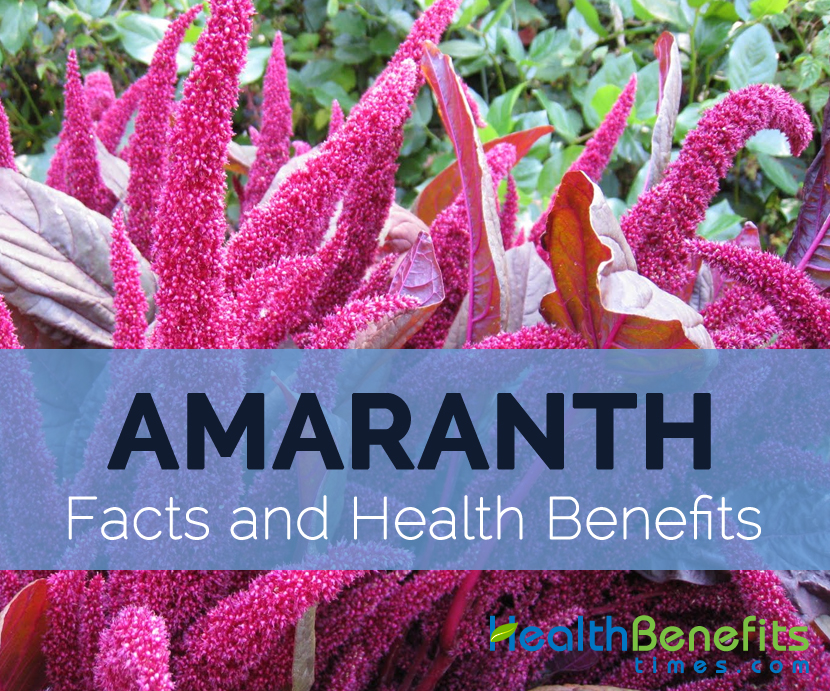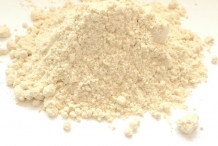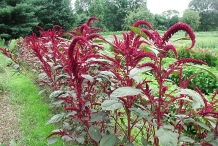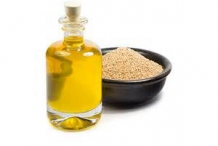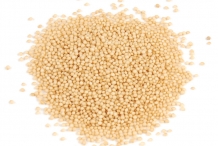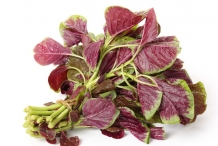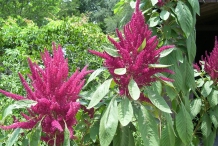Plant and Seeds
Amaranth is an annual, large and bushy plant usually about 90-130 cm high. It has oblong-lanceolate pointed green leaves normally arranged alternately in 2-4 inches long. The stems are erect branched. The plant yields flowers at summer or autumn (August and October) which is pink or white in color. The seeds are yellow, white, red, brown, pink, or black in a spherical or flattened lenticular shape. It prefers the warm climate and thrives in well-drained soils. As the plant is annual, it has got the lifespan of one year.
How to Eat
The younger greens and small varieties are consumed as salad and older greens are used as a substitute for spinach. Amaranth is added as an ingredient in pasta, bread, instant drinks, baby’s food, etc. It could be added to soups or stews and also taken as a cereal for breakfast. Popped Amaranth is added to bread, tofu or meat. Amaranth flour could be mixed with wheat flour to make bread or other foods. The seed could be cooked or roasted like germ vegetables.
Health Benefits of Amaranth
Amaranth is rich in antioxidants, , proteins, vitamins and minerals which make it the healthy food by preventing the chronic diseases, enhancing immune system, stimulating repair and growth, lowering inflammation and blood pressure, lessening varicose veins, and promoting the strength of bones and others. It could be consumed either as a leaf vegetable, grain flour or a cereal grain.
- High protein
Amaranth possess huge amount of protein which the body to break the plant protein into the usable amino acids and can be reformed into usable proteins. Protein is vital for the development and growth of new tissues and cells, energy and functions of metabolism. Even the leaves also possess beneficial proteins in it. (1)
- Antioxidant properties
The research shows that the peptide in Amaranth helps to lower inflammation and prevents the free radicals damage of mutating the healthy cells to cancerous cells. The anti-inflammatory activities eliminate the health conditions such as gout, arthritis and inflammation. (2)
- Develop bones
The leaves of Amaranth possess various minerals such as calcium. Amaranth enhances the strength of bones and also prevents osteoporosis. Calcium is essential to prevent bone demineralization. (3)
- Facilitates digestion
Amaranth is high in fiber content which assists in the digestion and promotes the minerals uptake. It is gluten free which provides an alternative grain source for the gluten intolerance of Celiac’s disease patients. (4)
- Heart health
The dietary fiber assists to balance the cholesterol by reducing the bad cholesterol from the cardiovascular system. Amaranth possess high amount of Vitamin K which enhances the heart health. The potassium reduces the blood pressure by lessening the strain on cardiovascular system and dilating the blood vessels. It also reduces the risk of atherosclerosis. The high concentration of phytosterols also assists in reduction of bad cholesterol. (5)
- Reduce varicose veins
Amaranth possesses the flavonoids such as rutin which eradicates the varicose veins by enhancing the capillary walls. It is also rich in Vitamin C which is essential for the collagen production, strengthen and repair the walls of blood vessels. (6)
- Eye health
An adequate amount of Vitamin A and carotenoids in the leaves of Amaranth helps to enhance the eye health. These antioxidants eliminate the chances of macular degeneration and cataracts. It lowers the oxidative stress in the ocular system that leads to the healthy and strong vision. (7)
8. Prevent birth defects
Folate is vital for the pregnant mothers because the deficiency in folate leads to the neural tube defects in the newborns. One should add Amaranth grains or leaves to the diet because it provides an adequate folate. (8)
- Helps to lose weight
The leaves and grains of Amaranth assist in losing weight by releasing the sated hormone from the appetite. The dietary fiber makes to feel for a long time which eliminates the snack between the meals. (9)
- Maintains hair health
Amaranth possesses lysine which is a rare amino acid that cannot be produced by the body. It raises the efficiency of calcium uptake and strengthens follicles which help to prevent baldness. The application of leaves juice after shampoo prevents the hair loss by strengthening hair.
Traditional uses
This herb is used by the practitioners to obstruct bleeding. Amaranth is used as an astringent and as treatment for diarrhea, mouth ulcers and excessive menstrual flow. Gargling with this herb assist to alleviate the pharynx tenderness and assist the mouth ulcer treatment. This herb if used externally helps to cure vaginal discharges, nose bleeding and other abrasions. Amaranth greens are used to enhance eyesight.
Precautions
Raw Amaranth possesses some toxic or undesirable components so; Amaranth should be consumed by cooking. Children are intolerant to lysinuric protein which may cause stomach pain and diarrhea. Lysine increases the absorption of calcium in the body which leads to the damage causing amount of calcium in the body. So one should avoid huge intake of calcium and lysine at the same time. Pregnant or breast feeding women should avoid Amaranth in order to be in the safe side.
Nutritional Value
In 98 grams of Amaranth, 9.35 grams of protein is found along with 45.98 grams of Carbohydrate and 5.2 grams of fiber. This grain is rich in various minerals and vitamins such as thiamine, riboflavin, vitamin B6, panthothenic acid, calcium, folate, magnesium, iron, phosphorus, manganese, zinc and potassium. It also possess huge amount of lysine, which is not oftenly found in other grains.
Calories 251 Kcal. Calories from Fat 35.01 Kcal.
| Amaranth Quick Facts | |
|---|---|
| Name: | Amaranth |
| Scientific Name: | Amaranthus |
| Origin | Central America and South America but now commonly cultivated in the countries having warm climate. |
| Colors | White, yellow, brown, pink, red, or black |
| Shapes | Spherical or flattened lenticular |
| Calories | 251 Kcal./cup |
| Major nutrients | Manganese (91.35%) Iron (64.63%) Phosphorus (52.00%) Copper (40.78%) Magnesium (38.10%) |
| Health benefits | High protein, Antioxidant properties, Develop bones, Facilitates digestion, Heart health |
| Proximity | Amount | % DV |
|---|---|---|
| Water | 184.89 g | N/D |
| Energy | 251 Kcal | N/D |
| Energy | 1055 kJ | N/D |
| Protein | 9.35 g | 18.70% |
| Total Fat (lipid) | 3.89 g | 11.11% |
| Ash | 1.89 g | N/D |
| Carbohydrate | 45.98 g | 35.37% |
| Total dietary Fiber | 5.2 g | 13.68% |
| Starch | 39.93 g | N/D |
| Minerals | Amount | % DV |
|---|---|---|
| Manganese, Mn | 2.101 mg | 91.35% |
| Iron, Fe | 5.17 mg | 64.63% |
| Phosphorus, P | 364 mg | 52.00% |
| Copper, Cu | 0.367 mg | 40.78% |
| Magnesium, Mg | 160 mg | 38.10% |
| Selenium, Se | 13.5 µg | 24.55% |
| Zinc, Zn | 2.12 mg | 19.27% |
| Calcium, Ca | 116 mg | 11.60% |
| Potassium, K | 332 mg | 7.06% |
| Sodium, Na | 15 mg | 1.00% |
| Vitamins | Amount | % DV |
|---|---|---|
| Vitamin B6 (Pyridoxine) | 0.278 mg | 21.38% |
| Vitamin B9 (Folate, Folic acid) | 54 µg | 13.50% |
| Vitamin B2 (Riboflavin) | 0.054 mg | 4.15% |
| Vitamin B3 (Niacin) | 0.578 mg | 3.61% |
| Vitamin E (alpha-tocopherol) | 0.47 mg | 3.13% |
| Vitamin B1 (Thiamin) | 0.037 mg | 3.08% |
| Tocopherol, beta | 0.93 mg | N/D |
| Tocopherol, gamma | 0.12 mg | N/D |
| Tocopherol, delta | 0.59 mg | N/D |


